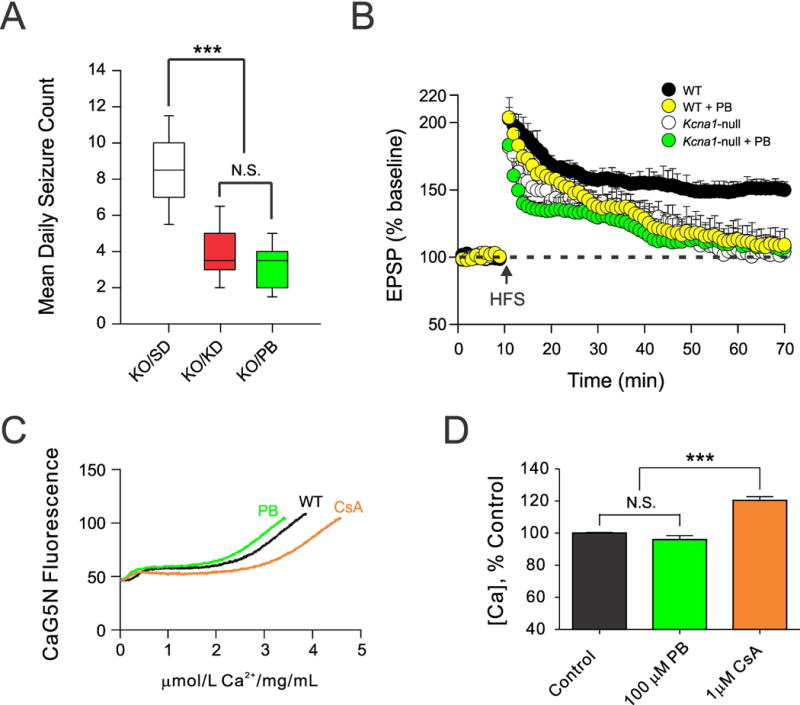Figure 5.

Comparison between the ketogenic diet (KD) and phenobarbital (PB) on spontaneous recurrent seizures, hippocampal long-term potentiation (LTP) and mPT thresholds. (A) Seizure frequency in Kcna1-null (KO) mice over a 3-day recording period after anti-seizure treatments. Both the KD and PB (30 mg/kg/d IP daily for 10 days) resulted in a significant decrease in seizure frequency compared to standard diet (SD) treatment, and were similarly effective (N=9 in each group). (B) PB worsened LTP maintenance in WT mice, and did not confer protective effects on the EPSP amplitude in Kcna1-null animals. PB (30 mg/kg daily) was administered IP over 10 days. Each set of traces was derived using 16 hippocampal slices from 9 mice. (C) Representative traces demonstrating that PB (100 μM) did not significantly alter the threshold for Ca+2-induced mPT in acutely isolated mitochondria from C57/Bl6 mice, compared to the control compound 1 μM CsA. (D) Summary bar graph reflecting the means ± S.E.M. of mPT thresholds in the different treatment groups. N=10–13 separate runs in each group from mitochondria prepared from 9 mice. *, p<0.05, ***, p<0.001; N.S., not significant. One-way ANOVA followed by Tukey test.
